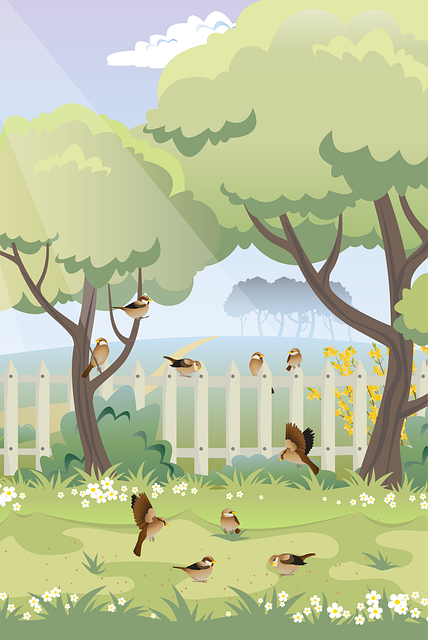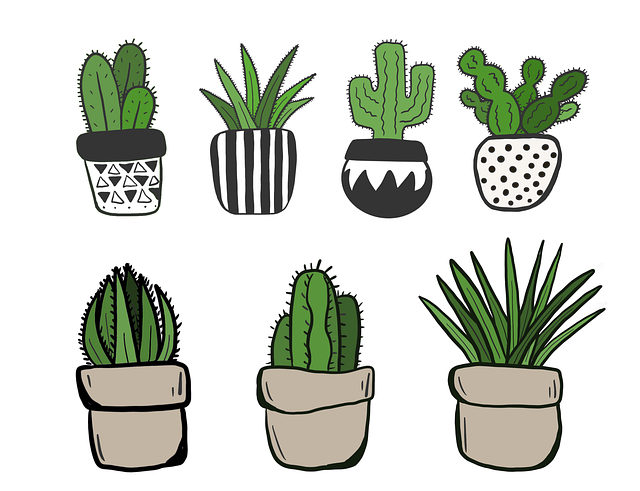Maintaining a healthy and productive garden across all seasons requires adherence to seasonal garden maintenance practices. In spring, focus on pruning perennials and shrubs to remove dead or diseased material and establish fertilizing schedules tailored to each plant's needs. Deep watering during summer conserves water while protecting plants from pests and fungal diseases. Fall cleanup is crucial to remove debris that could harbor pests and diseases, and late-season pruning ensures plant health. Protect your garden in winter by mulching and shielding plants from the elements. Year-round garden vitality is achieved through these seasonal routines: pruning at the right time, adjusting fertilizing schedules, smart watering, and vigilant pest control, all adapted to the changing conditions to ensure a thriving garden.
Seasonal garden maintenance is a year-round commitment that ensures your plants thrive and remain resilient against the elements. This article delves into the nuances of seasonal pruning techniques to enhance plant health throughout the year. We’ll guide you through spring garden preparation, where assessing and revitalizing your plants after winter sets the stage for robust growth. As summer approaches, we’ll adjust your watering routines and pruning schedules to safeguard your garden against heat and pests. Autumn brings its own set of tasks, with fall cleanup strategies that prepare your garden for the colder months and protect it from pests and diseases over winter. Finally, as we transition into the dormant season, learn how to fertilize, mulch, and prune to keep your plants vital and ready for the next growing season. With actionable insights on fertilizing schedules by season, seasonal pest control, and mulching for seasonal changes, your garden will remain a vibrant oasis come what may.
- Seasonal Garden Maintenance: A Guide to Spring Garden Preparation
- – Assessing plant health after winter
- – Removing damaged plant material
- – Pruning perennials and shrubs
Seasonal Garden Maintenance: A Guide to Spring Garden Preparation

As spring ushers in a new gardening season, gardeners must turn their attention to preparing their gardens for optimal growth and vitality. Spring garden preparation is not just about clearing away winter’s remnants; it’s also a critical time for pruning seasonal plants to encourage healthy growth. A well-timed cut can direct energy into fruit production or flower development, depending on the plant species. For instance, deciduous trees and shrubs that bloom in spring should be pruned immediately after flowering, while those that bear fruit later in the year should be pruned during their dormant period. During this season, gardeners should also implement fertilizing schedules tailored to the needs of different plants; ensuring each receives the nutrients it requires for a robust start.
Mulching is an essential aspect of maintaining your garden throughout the seasonal changes. A fresh layer of mulch helps regulate soil temperature, retain moisture, and suppress weeds, which can otherwise compete with your plants for nutrients and space. As spring transitions into summer, it’s important to adjust your watering schedules. Summer watering tips recommend early morning or late evening irrigation to reduce evaporation and prevent fungal diseases. This is also the time to start considering seasonal pest control measures; monitoring plants closely for signs of infestation and taking action promptly to protect your garden’s health.
In the fall, a different set of strategies come into play with fall cleanup strategies that prepare the garden for winter. This includes removing debris that could harbor diseases or pests, and cleaning up fallen leaves to reduce the risk of fungal growth. Winter garden protection is crucial to safeguard tender plants from frost and cold winds, which may necessitate the use of burlap, horticultural fleece, or other protective coverings. Proper preparation now will ensure that your garden lies dormant peacefully, ready to burst forth with life in spring.
As winter thaws into spring, it’s time to assess the damage from the colder months and begin the renewal process. Pruning any damaged branches and removing any dead or diseased plant material is essential for healthy regrowth. It’s also a good time to evaluate your garden’s layout and consider any changes that might enhance its beauty and functionality. By adhering to seasonal garden maintenance practices, from pruning in spring to protecting your garden in winter, you’ll cultivate a thriving oasis year-round.
– Assessing plant health after winter

As spring arrives, gardeners must assess plant health after a potentially harsh winter. Seasonal garden maintenance begins with evaluating perennials and woody plants for signs of damage or disease. It’s crucial to remove any dead or dying material to promote new growth, a process known as pruning seasonal plants. This is also the time for spring garden preparation, where gardeners should repair or replace fences, trellises, and other garden structures that may have weathered the winter storms. Additionally, fertilizing schedules by season should be established to provide plants with the necessary nutrients for vigorous growth. As summer approaches, gardeners must adapt their watering practices; summer watering tips include deep watering less frequently to encourage deep root growth and conserve water.
Fall cleanup strategies are essential before winter sets in. Clearing away fallen leaves and debris not only prevents pests from overwintering but also reduces the risk of fungal diseases that thrive in damp conditions. Mulching for seasonal changes can protect plant roots from extreme temperatures and can be adjusted as seasons shift. Furthermore, implementing fall cleanup strategies also includes pruning to shape plants, remove diseased or damaged limbs, and improve airflow to prevent moisture-loving pests and fungi from proliferating. As the cooler months arrive, winter garden protection becomes a priority. Protecting plants with mulch, burlap, or other protective coverings can shield them from harsh winds, heavy snowfall, and cold temperatures. This period also sets the stage for effective seasonal pest control measures, as many pests become less active in colder climates. Planning ahead for the next year’s garden care is a wise approach that ensures plants remain healthy and productive throughout their lifecycle.
– Removing damaged plant material

When engaging in seasonal garden maintenance, one of the first tasks to address during spring garden preparation is the removal of damaged plant material. This process not only promotes new growth but also prevents the spread of disease. As you prune, it’s crucial to follow a schedule that aligns with the growth patterns and dormancy periods of your plants. For example, many deciduous shrubs and trees are best pruned in late winter or early spring before new growth begins, ensuring a clear view of the plant structure for more effective cuts. Additionally, summer watering tips should be considered around this time to minimize stress on plants during their active growth phase.
As autumn approaches and the days shorten, it’s time to shift focus to fall cleanup strategies. This period is ideal for pruning many perennials and woody plants as they are less active. Removing dead or diseased wood not only improves plant health but also deters overwintering pests. Mulching becomes essential during this season, serving as an insulator to protect roots from extreme temperatures and conserving soil moisture. In preparation for winter garden protection, ensure that mulch is applied thickly enough to provide a buffer against cold winds and frost yet not so thick as to suffocate the soil. During winter, evergreens are particularly vulnerable to harsh conditions; thus, their branches should be checked and repaired if necessary. Fertilizing schedules should also be adjusted to reflect the slower metabolism of plants during this season, with slow-release, low-nitrogen formulations being preferable to avoid overstimulating growth at a time when it should be dormant. Finally, establish a routine for seasonal pest control by monitoring plants regularly and addressing infestations promptly to prevent significant damage before the next growing season begins.
– Pruning perennials and shrubs

Maintaining a thriving garden throughout the seasons involves strategic pruning and care. As winter wanes and spring awakens, it’s time to prepare your garden for the new growth ahead. Spring garden preparation includes assessing perennials and shrubs for any damage from the colder months and initiating the pruning seasonal plants. A keen eye should remove any dead or diseased wood, as well as crossing or rubbing branches that could impede airflow and sunlight. This encourages new, healthier growth and improves plant vigor. Simultaneously, fertilizing schedules by season should be implemented to provide the necessary nutrients for a robust regrowth, ensuring that your perennials and shrubs have the foundational support they need.
Summer brings its own set of challenges and opportunities. Summer watering tips advise deep and less frequent irrigation to promote deeper root growth. During this season, it’s crucial to stay vigilant for signs of summer pests that may feed on your plants’ foliage or sap. Regular checks can help you employ seasonal pest control measures effectively. As the weather cools and fall arrives, fall cleanup strategies should be at the forefront of garden maintenance. This is an ideal time to clean up fallen debris, which can harbor pests and diseases over winter. Additionally, this is when you should prune any late-flowering perennials and shrubs immediately after they bloom to ensure they are properly prepared for dormancy. Finally, as the cold season approaches, winter garden protection is essential. Mulching for seasonal changes helps to protect plant roots from extreme temperatures and insulates them against frost and snow. This layer of protection can also help prevent heaving, where frozen soil can push plants up and out of the ground. By following these seasonal maintenance practices, your garden’s perennials and shrubs will be well-positioned for a healthy and fruitful year ahead.
Incorporating seasonal garden maintenance practices ensures a thriving garden ecosystem. This article has outlined key strategies for spring garden preparation, including assessing plant health post-winter, removing any damaged material, and pruning perennials and shrubs to encourage new growth. As the seasons shift, gardeners can utilize summer watering tips to mitigate drought stress, employ fall cleanup strategies to prevent disease, protect plants during the winter months, and prune seasonal plants at the optimal time for health and vigor. Fertilizing schedules by season tailor nutrient delivery to plant needs, while seasonal pest control remains proactive against garden pests. Additionally, mulching serves as a vital practice for managing soil temperature fluctuations throughout the seasons. By adhering to these guidelines, gardeners can enhance their plants’ health and resilience, leading to a more bountiful and beautiful garden year-round.
